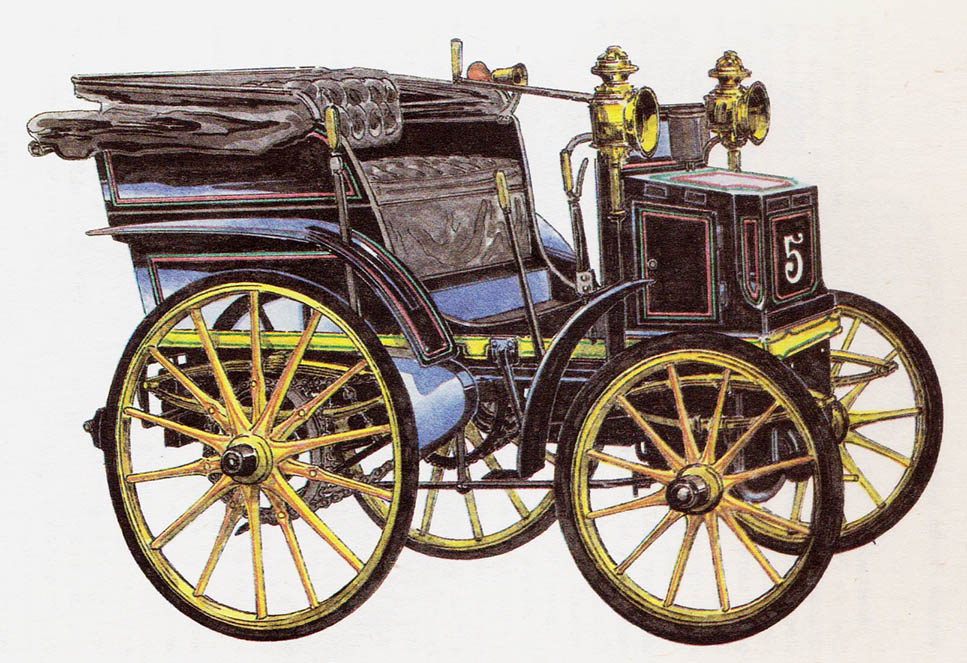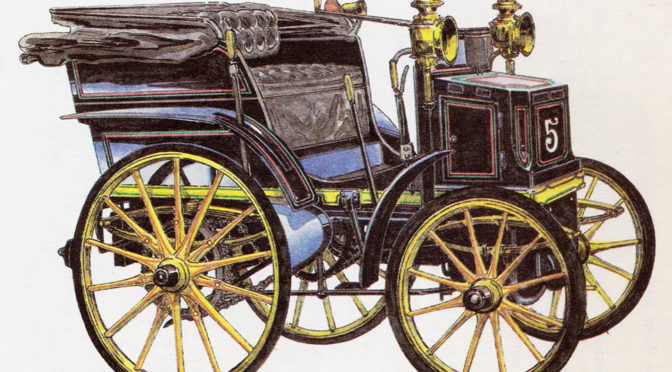PANHARD LEVASSOR – year 1895
Former Panhard Establishments SA & Levassor, Paris, France
It is difficult to speak of the winner of the world's first motor racing as a real racing car. High, a two-seater coach-type body was attached to a wooden frame with an extremely short wheelbase - only 1300 mm. The vehicle was powered by a Daimler two-cylinder engine, manufactured under license at the Panhard-Levassor factory. The V-shaped cylinders had a diameter 80 mm and piston stroke 120 mm, so that the total engine capacity was 1206 cm3. The engine with hemispherical combustion chambers ignited in the form of an incandescent tube, float carburetor and automatic sampling valves; reached the power of approx. 2,6 kW (3,5 KM) by 800 RPM. It was cooled with water in a circulation forced by a centrifugal pump. The drive was transferred from the engine to the three-speed gearbox by means of a friction cone clutch with a leather lining, and then to the differential via a leather belt. From there, the movement was transmitted via two roller chains to the sprockets connected to the rear wheels of the vehicle. Back, wooden spoke wheels - traditionally larger than the front wheels – like the other rubber wheels, they had full rims. The braking system consisted of two types of brakes – manual joystick operating on the rear wheel rims and foot lever, decelerating drive shaft. The front wheels were steered by a special Ackermann articulation mechanism, so named after its inventor. The vehicle did not yet have a steering wheel, and the driver turned the wheels with the control lever. With weight 600 kg it was possible to reach the top speed 30 km/h.

Former Panhard Establishments SA & Levassor, Paris, France
Victory for Emile Levassor, driving this vehicle in 1895 year, started a regression in the development of steam-powered cars - later withdrawn from the racetracks.
The development of the Panhard-Levassor cars was aimed at continuously increasing engine capacity and power, while reducing the weight / power ratio. Model of the year 1902 already had a four-cylinder displacement engine 13,7 liter and power 51,5 kW (70 KM), what compared with its weight - 1060 kg - gave a weight to power ratio equal to 20,6 kg / kW. Unfortunately, the car's chassis was not refined with increasing performance parameters. Difficult to steer the car at average speeds of then approx 100 km / h has been the cause of many serious accidents.
